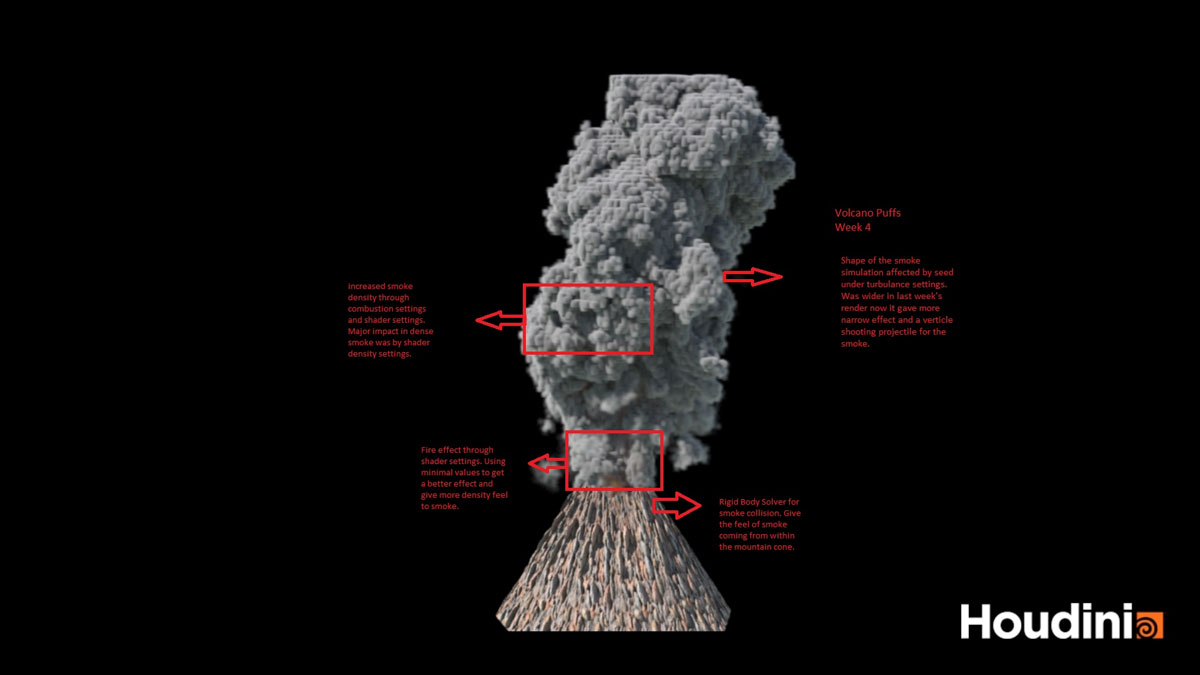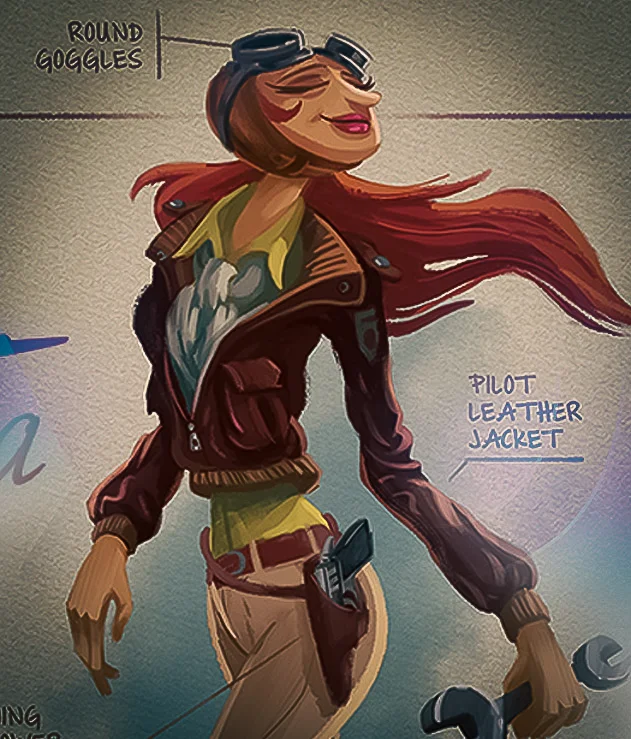 Image by: Harshit Chaudhary, VANAS student
Image by: Harshit Chaudhary, VANAS student
What is realtime 3D?
Have you ever wondered about the magic behind virtual reality experiences? Or the technology that makes video games feel like alternate realities? The secret is a groundbreaking technology called realtime 3D.
Realtime 3D, or RT3D, revolutionizes how we experience digital worlds. It uses cutting-edge 3D modeling and rendering, allowing interactive graphics to respond immediately to our actions.
But exactly how does it achieve this? What intricacies lie in creating these lifelike 3D simulations? We'll explore the impact of software engines like Unity and Unreal in shaping interactive virtual realities. Let's dive into the universe of realtime 3D, understanding its incredible potential and diverse applications.
Key Takeaways:
- Realtime 3D is a technology for instantly creating and rendering three-dimensional images.
- RT3D is transforming the visualization field, enabling immersive, interactive experiences in various domains.
- The video game, animation, and visual effects industries are leveraging RT3D for realistic and engaging digital environments.
- This technology is enhancing sectors such as commerce, automotive, entertainment, gaming, training, and construction.
- With the escalating demand for immersive 3D experiences, the market for realtime 3D rendering is expected to hit about $7.96 billion by 2027.
The Basics of Real-Time Rendering
Real-time rendering turns 3D models into stunning 2D images instantly. This process enables real-time interaction with 3D images, unlike pre-rendering which only offers static images. It crafts dynamic virtual worlds that change as users navigate through them.
Light and depth significantly improve the realism of these virtual environments. By mimicking real-world light interactions, developers achieve breath-taking visuals. These techniques create a highly immersive experience, making virtual scenarios appear incredibly lifelike.
For a fluid experience, real-time rendering needs to operate at 24 frames per second or faster. This speed prevents any noticeable delay, ensuring that movement appears smooth. Users can then explore virtual spaces seamlessly, without any interruptions.
Real-time rendering is like magic – it brings 3D worlds to life, enabling real-time interaction and customization. With each frame generated at lightning-fast speeds, users can explore virtual environments without missing a beat.
In video game development, real-time rendering transforms how games are played. It allows for an immersive experience, responding instantly to player's actions. Games become more than just visuals; they're dynamic worlds where every choice matters.
But it’s not just about games. Real-time rendering impacts many fields, from architecture to virtual reality. It opens up new frontiers for digital interaction, offering experiences that are both realistic and interactive.
Advantages of Realtime 3D
Realtime 3D technology brings myriad benefits, becoming a favored tool in various sectors. Its key advantage lies in the immersive experiences it enables. Through realtime 3D rendering, digital scenarios become almost as real as their physical counterparts. This similarity enhances the user's exploration and interaction.
Interactivity stands as another significant perk of realtime 3D. It allows users to dictate their journey within a digital environment, engaging with elements in real-time. This control not only boosts engagement but also tailors the experience to each user, making it uniquely immersive.
When contrasted with static images, realtime 3D emerges superior in delivering smooth, efficient digital experiences. It reduces loading times and permits instant adjustments, facilitating seamless user interactions. This efficiency highlights the technology's edge in creating dynamic, user-friendly environments.
The commerce industry has seen profound transformation through realtime 3D. It allows customers to preview products in 3D before buying, reshaping online shopping norms. This advance has revolutionized how consumers interact with products digitally.
In the automotive realm, realtime 3D has paved the way for innovative features. These include intelligent navigation and HUDs that provide drivers with essential, real-time data. Such advancements have elevated the driving experience by integrating cutting-edge technology directly into the vehicle's interface.
Realtime 3D has also redefined entertainment and media. By fostering more immersive visual content, it enhances the enjoyment and engagement of audiences worldwide. This shift has significantly enriched the quality and appeal of visual storytelling.
The gaming industry greatly profits from realtime 3D's capabilities. Developers leverage this technology to forge interactive settings and lifelike simulations, deeply engaging players. This has revolutionized gaming, offering more depth and realism in play.
In education and training, realtime 3D proves invaluable. It creates detailed simulations for practice, enriching the learning journey. Users can hone skills in a realistic setting, making educational experiences more effective and impactful.
The AEC and construction sectors also benefit from realtime 3D's precision. It aids in visualizing projects early on, fostering better decisions. By offering precise architectural representations, it streamlines design processes and enhances stakeholder communication. This technology has become indispensable in construction and design.
In summary, realtime 3D's ability to immerse, interact, and streamline makes it indispensable across industries. From commerce to automotive, and entertainment to gaming and education, its impact is profound. Adopting realtime 3D has become essential for those aiming to deliver superior digital experiences and realistic visualizations.
Industries Benefiting from Realtime 3D
Realtime 3D technology has reshaped various industries within the extended reality (XR) landscape. This breakthrough offers valuable benefits and opportunities. Let's explore how different sectors utilize RT3D to boost their operations and offer outstanding experiences to their customers.
Commerce
In commerce, RT3D has transformed the online shopping journey. By using realtime 3D visualizations, businesses provide a more interactive, immersive product exploration. Customers viewing products from all angles make better-informed decisions. This leads to higher satisfaction and fewer returns.
Automotive
The automotive sector uses realtime 3D for innovative vehicle features. Technologies like intelligent navigation and HUDs enhance driver safety and convenience by offering real-time situational awareness.
Entertainment and Media
Entertainment and media leverage RT3D for captivating, immersive content. It allows companies to craft experiences that draw audiences into virtual realms. This enriches storytelling and viewer engagement.
Gaming
Gaming, a pioneer in 3D graphics, has been revolutionized by RT3D. This advancement has made game development faster and more cost-effective. It allows for the creation of realistic visuals and dynamic environments.
Training
Training and education have adopted RT3D for realistic, effective simulations. From flight to medical simulations, it offers immersive training settings. These help learners acquire vital skills in safe, controlled environments.
AEC and Construction
The AEC sector benefits from RT3D in design and planning. It provides accurate project visualizations for stakeholders. This aids in decision-making and early issue identification, streamlining workflows, increasing efficiency, and cutting costs.
Realtime 3D technology's capabilities have opened new doors across industries. It offers lifelike visualizations and interactive settings, establishing itself as a key asset in the digital era.
The Rise of RT3D Technology
The demand for immersive 3D experiences has led to the quick expansion of real-time 3D rendering technology. With the advent of XR technologies and other innovations, the real-time rendering market is expected to hit around $7.96 billion by 2027. This demonstrates the growing need for interactive, visually stunning digital experiences.
Today's consumers desire more than passive observation. They seek full immersion and engagement in the digital realm. Real-time 3D technology meets this demand by offering lifelike visualizations and interactive experiences. Various industries now see the immense value that real-time rendering solutions bring in creating outstanding user experiences.
Real-time 3D allows developers and designers to use powerful tools for crafting lifelike virtual realities and simulations. These experiences draw users in, enabling interaction in real time. This results in a dynamic and engaging digital world.
In fields from XR to gaming, entertainment, automotive, training, and beyond, the thirst for immersive experiences by real-time rendering continues to grow. Firms are using real-time 3D tech to boost their digital products, retain customers, and foster growth within their sectors.
The market value of real-time rendering not only shows its popularity but also its profound effect in delivering vivid, striking digital experiences. Real-time 3D is crucial for industries aiming to offer realistic visualization. It engages users with interactive, enthralling content.
Realtime 3D in Video Game Design
Realtime 3D technology has transformed video game design. Developers now have advanced tools to craft immersive gameplay and realistic simulations. Educational institutions like VANAS offer specialized programs. These focus on video game engines with real-time 3D capabilities.
Game engines like Unreal and Unity are now essential for developers. They unlock creativity and allow for the crafting of interactive environments. Players can delve into and interact with these virtual worlds in real time. These engines help designers realize their creative visions through stunning visuals and dynamic interactions.
Realtime 3D technology enables the creation of immersive gameplay. It captivates players by transporting them into thrilling game universes. The rendering of detailed 3D graphics enhances visual fidelity. Realistic character animations and well-designed environments bring games to life in unprecedented ways.
Developing realistic simulations is a major advantage of realtime 3D in gaming. Designers can replicate worlds that adhere to real-world physics. This allows for a dynamic interaction, where environments respond realistically to player actions. Such interactivity boosts immersive feelings and engagement.
Realtime 3D technology's impact on the gaming industry is significant. It has led to the creation of visually impressive games that engage and entertain. As the industry evolves, realtime 3D remains critical. It drives the development of more immersive and realistic gaming experiences.
Realtime 3D in Animation and Visual Effects
Realtime 3D technology revolutionizes how animation and visual effects studios operate. Through game engines with real-time rendering, creating lifelike animations becomes possible. Such advancements allow for detailed and interactive creative work.
Game engines designed for animation are critical for studios. They offer tools necessary for dynamic, engaging content. Realtime 3D brings characters and environments to life with unprecedented realism. This technology fascinates audiences with its visual magnificence.
Similarly, visual effects studios gain from real-time rendering. It makes integrating CGI into live footage seamless. Whether it's creating mythical creatures or explosive scenes, the results are spectacular.
The impact of realtime 3D on these industries is profound. It streamlines production, elevates image quality, and expands creative boundaries. With game engines and real-time rendering, these studios continually captivate audiences globally.
FAQ
What is realtime 3D?
Realtime 3D, or RT3D, allows for creating and displaying three-dimensional images instantly. It supports immersive and dynamic interactions, powered by engines like Unreal and Unity.
How does real-time rendering work?
This process rapidly converts 3D models into detailed 2D images. It brings photorealistic effects to these images, promoting instant interaction and modification.
What are the advantages of realtime 3D?
Realtime 3D vastly improves digital encounters, offering immersive engagement and quick response times. It enables immediate alterations, revolutionizing various sectors like digital retail and automotive innovation.
It also enriches media content, streamlines game production, and contributes to effective training simulations. Moreover, it aids in precise project visualization for AEC and construction fields.
Which industries benefit from realtime 3D?
Realtime 3D significantly advantages sectors like commerce, automotive, and entertainment. It also influences media, gaming, educational training, architecture, engineering, and construction by providing lifelike visualizations and interactive experiences.
What is the market value of realtime 3D?
By 2027, the realtime rendering industry is expected to hit nearly $7.96 billion. This growth is driven by the escalating demand for immersive and interactive digital experiences.
How is realtime 3D used in video game design?
Video game design heavily relies on realtime 3D technology. It employs engines like Unreal and Unity to foster immersive gameplay and authentic simulations. This technology enables the creation of lifelike environments where players can engage actively and instantaneously.
How does realtime 3D impact animation and visual effects?
In animation and visual effects, realtime 3D plays a pivotal role. It leverages game engines for real-time rendering to produce realistic animations and special effects. This innovation facilitates the production of dynamic, interactive content, significantly elevating the visual narrative.







